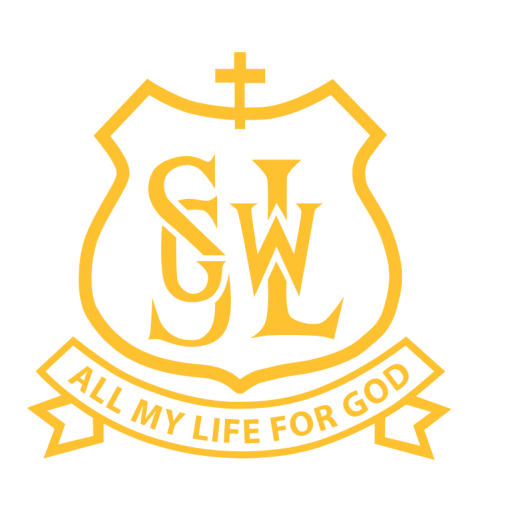The Religious Education Curriculum is situated within the educational directions for the State of Victoria as outlined in the Victorian Essential Learning Standards (VELS). In VELS terms, Religious Education is a domain situated within the Discipline-based Learning Strand, which brings together many disciplines and aspects of life integrating these in the context of faith.
Beliefs and values underpin and guide the overall Religious Education program at St. Leonard’s. The program has been developed in accordance with two primary sources: the St. Leonard’s Catholic Parish Primary School Vision Statement which states our beliefs and aims in Faith Education and “To Know, Worship and Love” from the Catholic Archdiocese of Melbourne (2008).
In Religious Education learning experiences will be provided to assist students to:
- make sense of everyday life experiences in the broader contexts of mystery, complexity, wonder and awe.
- gain access to and develop an understanding of the scriptures, the traditions of the Catholic community; its stories, its experiences and its teachings.
- celebrate with others the mystery and life of the Risen Christ.
- respond to the activity of God in their lives and in the whole of creation.
The role of prayer and liturgy in the Religious Education program
At St. Leonard’s prayer is seen as a most important means of the children establishing a relationship with God. A positive personal relationship with God and the Christian community are the foundations of faith development that is nourished through prayer and liturgy. These are seen as important parts of the child’s total development. We appreciate that our school is an integral part of St. Leonard’s Parish community and encourage children and their families to participate and contribute to the liturgical life of our Parish.
It is important to provide the children with imaginative and meaningful experiences of prayer. These are important as we seek to provide the children with different ways of being aware of the presence of God and responding to Him. Music, song, movement, drama and visual images as well as our meditation program are all ways we experience the presence of God.
Meditation at St Leonard’s
As part of the “prayer, liturgy and sacraments” content strand from the current Religious Education Curriculum Framework, we have introducing Christian Meditation into our program which will be experienced from Prep through to Year 6. We begin each morning with 5 minutes of reflection and contemplation before the school day begins.
Children and young adults are born contemplative but in our busy world we are bombarded from an early age with noises, stimulus and a message to keep busy. The aim of this teaching program is to share with children the essence of Christian Meditation which is to find God in stillness, silence and simplicity, or as the Old Testament says, “Be still and know that I am God.” (Psalm 46:10)
What is Christian Meditation?
The Meditation experiences found in this program are designed to help children enter into the mystery of the sacred, the heart of true Faith. In leading children to meditation it is important to remember that we are on a journey with the children. We too as adults will join with them on the journey toward God. We share our faith with them and offer them the opportunity to pray in silence.
Christian Meditation is a form of prayer and as such is proven :
• to make children calmer and more relaxed and increase their sense of wellbeing and harmony.
• to help create a sense of wonder in children.
• to help create a sense of God in those who meditate.
• to help create a sense of community.
• to allow children a chance to be silent and experience God in the silence.
• to allow children a chance to enter into the present moment.
St Paul outlined the fruits of prayer in his letter to the Galatians (5:22). “Love, Joy, Peace, Patience, Kindness, Goodness, Fidelity, Gentleness and Self control.” Christian Meditation is a journey of faith and the earlier a person begins this journey the more profound the effect.
Resources used for Religious Education at St. Leonard’s
The key resource is the “To Know, Worship and Love” text.
This Religious Education text for students consists of Level 1 & 2 materials which contain a comprehensive description of the elements of the Good Shepherd Experience. The Levels 3 & 4 material describes the Inquiry process used in RE, a faith seeking understanding approach to Inquiry.
Sacraments:
There is a gradual preparation throughout each level for the Sacraments of Reconciliation, Eucharist and Confirmation. Teachers support and join with the Parish Priest and parents in preparing the students for the reception of these Sacraments.
Students are prepared for the Sacrament of Reconciliation in Year 3, First Eucharist in Year 4 and Confirmation in Year 6. Whilst the classroom teachers carry out the formal preparation for these Sacraments, it is a requirement that parents are involved in Family Workshop nights and are supportive of the school program.
Every student in the class participates in the preparation of the Sacrament. Those students not receiving the Sacrament are invited to attend with their fellow students. They are involved in the Sacrament by receiving a blessing from the Priest or Bishop. RE family workshop nights are also offered for students in a non-sacramental year, i.e. Prep, Year 1, Year 2 and Year 5.
The students are encouraged to deepen their understanding of and participation in Reconciliation in the Middle/Senior Primary Grades, through regular opportunities to receive this Sacrament. Eucharistic celebrations take place on a regular basis throughout the year with children being involved in regular weekday and Sunday Parish Masses and also attending Masses of celebration (eg. St. Leonard’s Feast Day). Parents are encouraged to join with the children on these special opportunities for community worship and prayer
